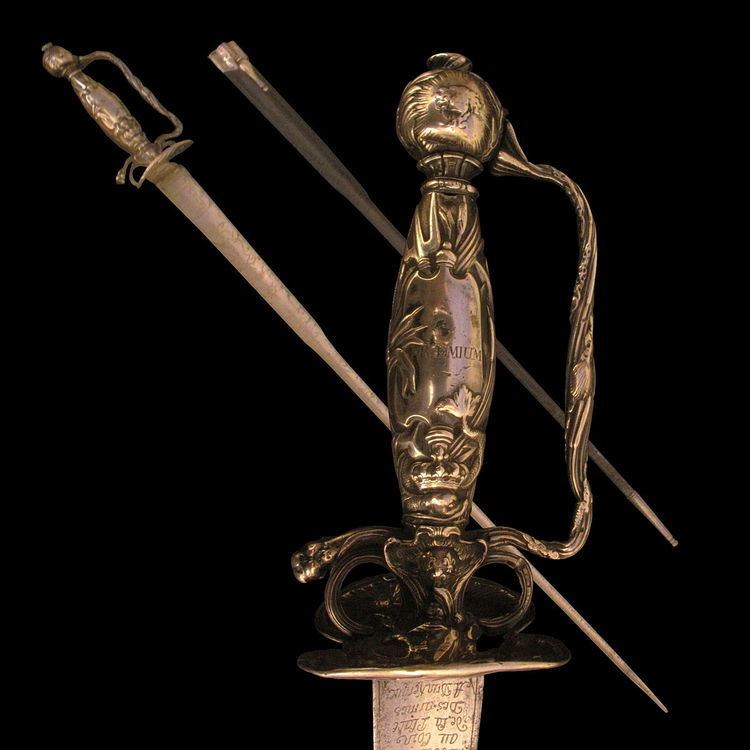 | ||
Weapons of Honour (French: Armes d'honneur) are ceremonial weapons awarded for service or assistance to France.
Contents
History
Swords of honour were awarded during the Ancien Régime for exceptional service. On 30 April 1746, Minister of the Navy Maurepas awarded such a sword to privateer Pierre Anguier for his intervention in the Jacobite rising of 1745.
Established on 25 December 1799 and issued by the French Consulate, weapons of honour were awarded as military awards for feats of arms. The civilian version of this distinction is the scarf of honour (l'écharpe d'honneur). This completed and materialised the practice of solemnly declaring a citizen of group of citizens to have bien mérité de la Patrie.
Weapons of honour were replaced during the First French Empire by the institution of the chivalry Order of the Legion of Honour. Recipients of weapons of honour automatically received the Legion of Honour after its inception.
Categories
Each component of the Napoleonic armies had its own distinction and weapons of honour:
